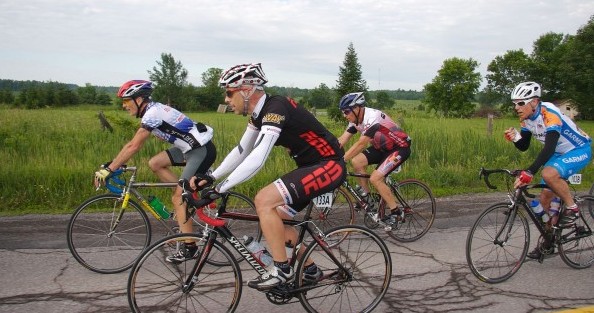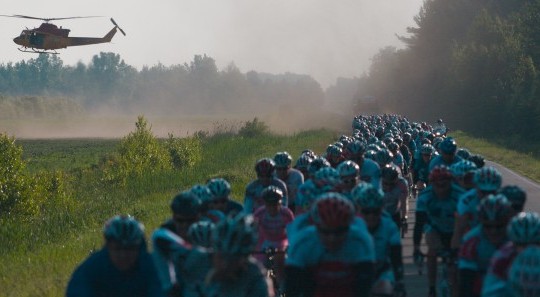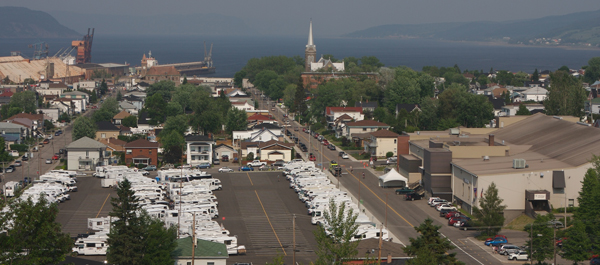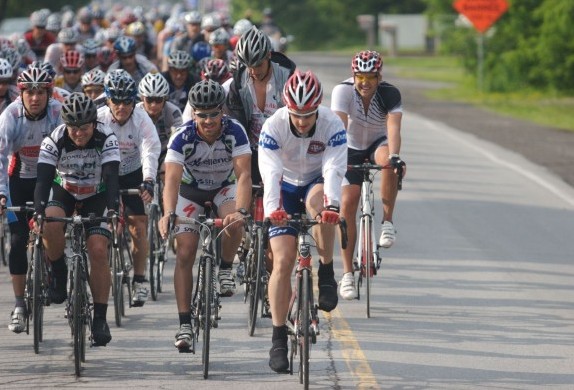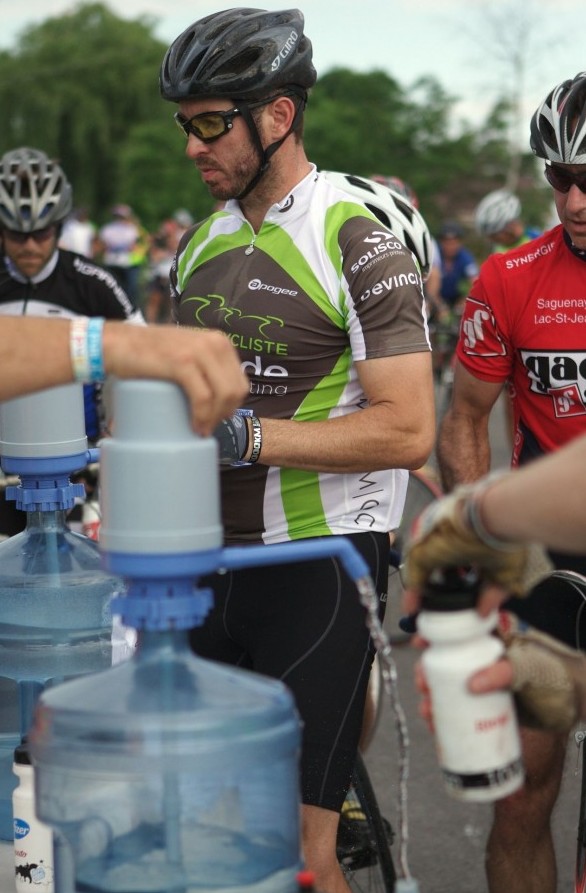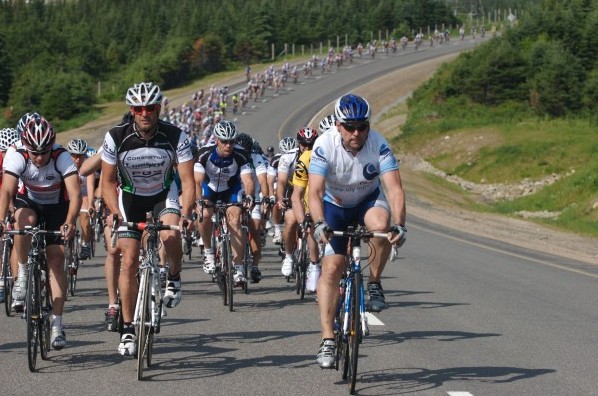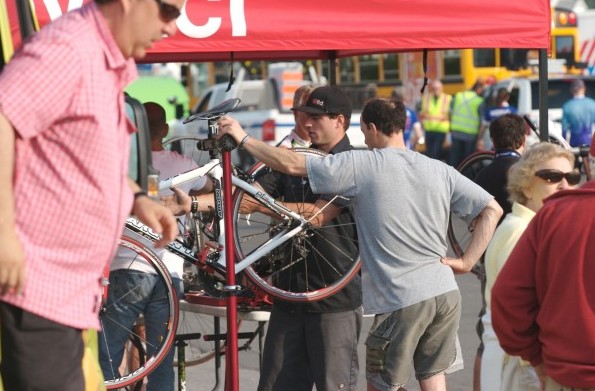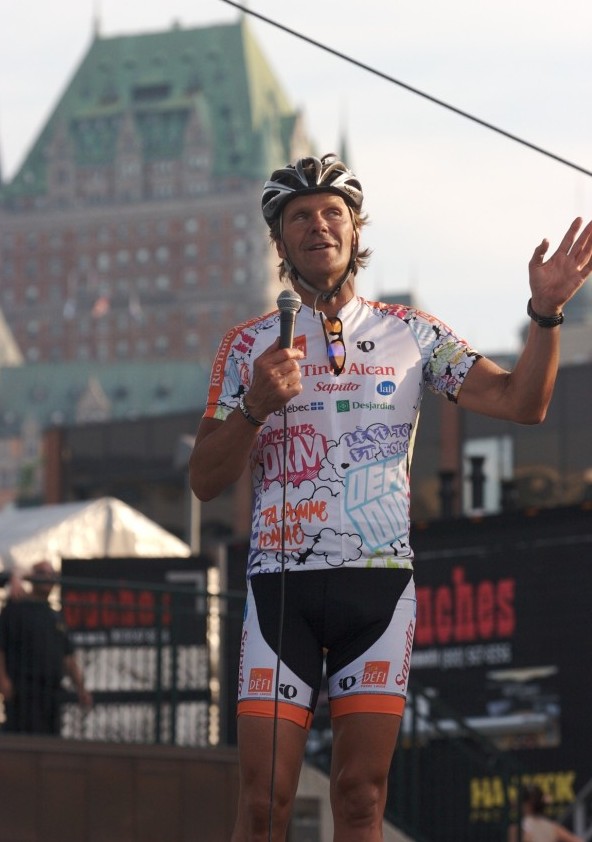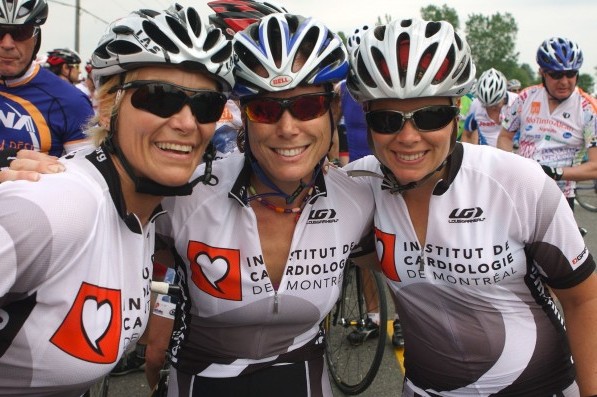-
Conditions 2022
First Condition
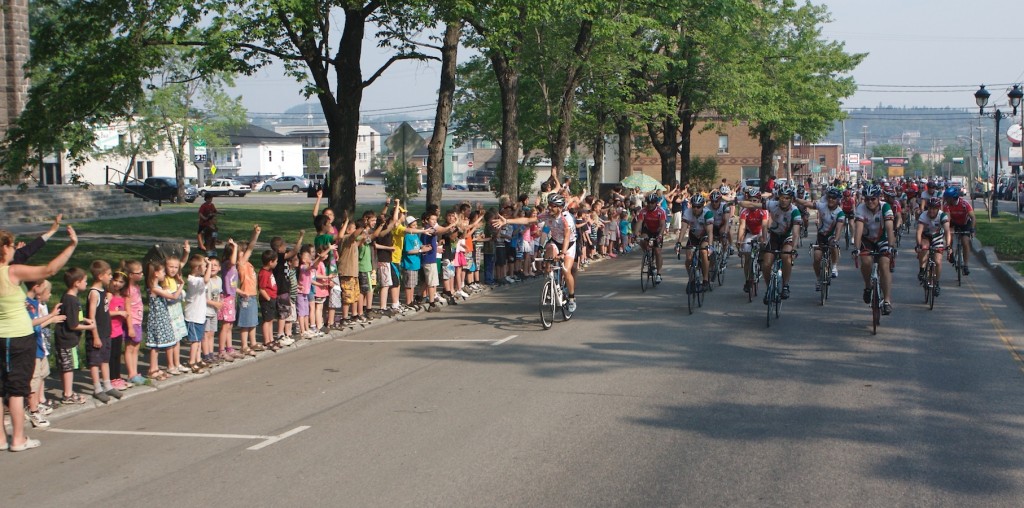 Pierre suggests that one of your team’s members be a friend or acquaintance who is a more sedentary person and who is determined to take a healthy turn for the better with a change in lifestyle. It can be an overweight person who wants to lose a few kilos, someone who has just quit smoking or intends on doing so, or someone with an illness that is now in remission. This is not a mandatory requirement, but rather a suggestion in line with the Grand defi’s mission. This person is important for your team. You will need to coach, support and train this person to be ready for the “big day”—the day of the departure.
Pierre suggests that one of your team’s members be a friend or acquaintance who is a more sedentary person and who is determined to take a healthy turn for the better with a change in lifestyle. It can be an overweight person who wants to lose a few kilos, someone who has just quit smoking or intends on doing so, or someone with an illness that is now in remission. This is not a mandatory requirement, but rather a suggestion in line with the Grand defi’s mission. This person is important for your team. You will need to coach, support and train this person to be ready for the “big day”—the day of the departure.In addition, this cyclist must relate their story on the registration form: What was the motivation to take action? What are this person’s motives and goals? Have they been reached? During The 1,000 KM, the host will tell the story of these “new recruits”. In a sense, they will be the stars of The 1,000 KM event. The goal of this exercise is for you to have as much influence in your community as possible. By having this cyclist on your team, you are making a considerable, extra effort to change those around you!
This is not a mandatory condition because we understand that some teams are close-knit and their five cyclists have developed solid relationships. If you decide to take up the challenge and cannot find a candidate with the desired profile, we can recommend one to you.
Second Condition
This is a mandatory condition for all teams in 2022. Each team must associate with one or more elementary schools of its choice (a sort of sponsorship). You must ensure that your schools are enrolled in the Energy Cubes Challenge in May and earn a significant number of energy cubes. We believe this is an original way to build bridges between you, the cyclists, and the children who will be giving 100% in May.
For more information, consult the guide for sponsors (in french only).
You must also be involved as much as possible with this school in different ways. For example, you can give a talk to explain to the pupils what motivates you to take up such a challenge. The goal is obviously to raise awareness of healthy life habits among children between 6 and 12 years of age, and maybe even instill in them a desire to ride The 1,000 KM when they are older!
Sponsorship tools are available on this page to help you in your sponsorship activities.
From a financial standpoint, all donations exceeding the $11,000 registration fee will be given to the school that you are sponsoring. If your team collects surplus donations, to be entitled to them your school will have to introduce a project promoting healthy life habits. A cheque for the surplus donations will be issued subject to approval of the school’s project by Grand défi Pierre Lavoie.
Pierre Lavoie is no longer the only spokesperson of the Grand defi among Quebec’s schoolchildren. He now has an army behind him to effect a real change in our society’s health culture.
-
Identification
A chip system will be used for the 2022 edition. When they pass under the start and finish arches, cyclists will be logged by a custom chip system installed on each bike. This allows us to verify the maximum number of riders per team in the pack during each leg.
The system will also provide relevant statistics for each cyclist, such as time and kilometres traveled.
-
Information for your team’s driver
Road safety
The driver of a cycling team is responsible for safely driving the cyclists from one leg to the next. The teams’ vehicles are not under police escort. Their drivers must therefore obey all highway traffic laws. As well, for some legs, the teams’ drivers follow a route different from the one the cyclists follow so as not to conflict with the pack or obstruct local traffic. The pack of cyclists, however, is under police escort from start to finish.Rules for commercial vehicle drivers
For added safety, Grand défi Pierre Lavoie strongly recommends that drivers comply with the rules for operating commercial vehicles, especially the number of hours of sleep required.Maximum passenger capacity
Each driver is also responsible for knowing the maximum passenger capacity of the vehicle being driven. Grand défi Pierre Lavoie permits a maximum of 5 cyclists and 1 driver per vehicle.* For multi-team vehicles longer than 34 feet, a second driver is permitted per vehicle.
Rest periods for the driver
When a team has only one driver, from time to time the driver must ask one of the cyclists to take over driving so the driver can get some rest.Gassing up and sewage disposal
In addition to being responsible for the good condition of the vehicle, the driver must also make sure to regularly refuel and empty the sewage tank. We will tell you where this can be done during the weekend.Traffic flow
For some legs, the teams’ vehicles follow the same route as the pack of cyclists. IT IS VERY IMPORTANT TO KEEP MOVING AND ESPECIALLY TO NOT SLOW DOWN NEAR THE PACK (to cheer, take photos, etc.), even if the temptation is strong. This instruction will also be conveyed to you very seriously by the police. As well, to avoid complaints from the people in the local communities, we have to keep our convoy moving in a continuous, even flow. Public complaints can jeopardize our collaboration with Québec’s Ministry of Transportation (MTQ) and with the Sûreté du Québec. Without them, it would be The 0 KM event!Meals
Grand défi Pierre Lavoie will provide all team meals (for 1 driver and 5 cyclists) from Thursday noon, at La Baie, to Sunday, in Montréal. To be given a meal, you will have to show your bracelet or your driver ID. We count on your cooperation to respect the number of meals provided for your team. Refreshments will also be available at all the sites. It may be noted that drivers too will have access to the toilets and showers. -
Packing List
You will find in this comprehensive list (in french only) information on what you will need or likely find useful during The 1,000 KM. -
Number of Cyclists per leg
Two cyclists per team are allowed during the daytime legs. However, there can be only one cyclist per team in the pack during the night legs. During the “hybrid” legs that begin during the day and end at night, two cyclists per team are allowed. Be sure to consult the hours of each leg to know how many cyclists you can have in the pack.
Download the Excel spreadsheet (in french only) that your team can use to plan and assign members to each leg. This spreadsheet’s layout lets you plan and visualize each member’s cycling distance.
-
Types of acceptable support vehicles
If your support vehicle is for only one team
Without a trailer, the maximum vehicle length is 34 feet.
If your support vehicle is for more than one team
No length limit for the vehicle. No trailer is permitted.
* If your vehicle does not meet these criteria, please contact us by email (1000km@legdpl.com) before you leave home so we can assess the impact of your variances and confirm whether or not you can cross the start line with your vehicle. Each vehicle will be measured bumper to bumper on arrival at La Baie.
-
Cycling Mentors
Safety is a must. We therefore need the help of the most experienced cyclists to act as cycling mentors. We need about twenty (20) mentors per leg to form an ideal pack. Unlike a race, the pack in The 1,000 KM of the Grand défi Pierre Lavoie has a full range of cyclists: the weaker cyclists are at the front and the strongest at the back. Our mentors must be seasoned cyclists who are very good at teaching cycling techniques, as they give guidance to other participants. They sweep the pack and, if necessary, accompany individual cyclists in difficulty to bring them back to the front.
If you are interested in registering as a cycling mentor, be sure to select this option on the registration form.
Those who accept this role will be clearly identified and will help the organization make sure everything runs as smoothly as possible from start to finish by providing guidance and ensuring safety. This role is on a voluntary basis and is crucial to the success of The 1,000 KM. It is not mandatory that your team have a member with sufficient experience to qualify as a mentor.
A cycling mentor is one who:
- Regularly rides in a pack or alone.
- Covers about 5,000 km per season.
- Has experience in competitive cycling, road cycling, mountain biking or triathlon.
- Is able to explain important cycling concepts and be an ambassador with cyclists who have difficulties.
A mandatory information and training session for cycling mentors will be held on Thursday, June 17. In addition, a Guide for Cycling Mentors will be available online at legdpl.com a few weeks before The 1,000 KM event.
-
Refreshments
The length of each leg varies between 40 and 135 km. You can choose the order in which your team members take over at each leg, so everyone can ride several legs of The 1,000 KM. At every stop, there will be water, thirst-quenching drinks, coffee and snacks (fruit, cheese, chocolate milk, etc.). For legs longer than 70 km, there will be a refreshment stop midway, with water and thirst-quenching drinks. These stops will be 7 minutes in length.
-
Night legs
Some legs of the 2022 edition of The 1,000 KM will be biked at night. A supplementary lighting system will be provided to enable cyclists to ride safely at night.
It is high-performance lighting that will be used by individual cyclists traveling at night. Only one cyclist per team will be allowed to ride at night.
-
Level of Difficulty of Legs
The level of difficulty of each leg is determined based on speed, elevation gain and distance. We define three levels of difficulty for The 1,000 KM:
- Regular: Predominantly flat and straight. Distance ranges from 50 to 80 km. Average pack speed is 27 kph.
- Intermediate: Leg with some small valleys, covering more than 80 km. Average pack speed is 28 kph.
- Advanced: Generally very hilly covering 90 to 120 km. Average pack speed is 30 kph.
- Expert: Very difficult leg, more than 120 km and considerable elevation gain. Only seasoned cyclists in top physical condition should choose these legs.
For the first few minutes of each leg, the pack rides at a slower speed to warm up. For some portions of the leg, cyclists should therefore expect the speed to exceed the planned average for the entire leg.
Weather conditions will affect the speed of the pack. In adverse conditions, we will have to leave earlier than planned because our arrival time cannot be changed.
-
Flat tires
Cyclists with a flat tire will be swept up by the Mécano Bus operated by Grand défi. After the repair is completed, we will return the cyclist to the pack, but only when the convoy has come to a full stop (refreshment stop or a stop ordered by the police).
For the leg incorporating cyclists riding La Boucle, we suggest you be prepared to repair your flats yourself. Bring levers, a spare tube and an air cartridge or pump. You may otherwise have to wait a long time for mechanical assistance given the large number of cyclists during this leg.
Be sure that your tires are new and in good condition before starting The 1,000 KM. We highly recommend that you use tires with tubes instead of going tubeless to facilitate repairing a flat.
All cyclists must check the pressure in both tires before each leg.
-
Mechanical Services
Cycle Néron will offer bike repair services at each stop. Cyclists must pay the cost of their replacement parts. Please note that some non-urgent services will not be offered, such as washing your bike, changing the handlebar tape and changing a tubeless tire.
Take your bike to your specialized bike shop for a check-up and maintenance during the weeks leading up to The 1,000 KM to ensure it is in excellent condition before the event.
-
Physiotherapy and Massage Therapy
All along the route, Remix Santé will offer physiotherapy and massage therapy services to the cyclists, drivers and volunteers involved in The 1,000 KM. Five therapists will be on duty during some of the legs and at the following stops: Saguenay (Palais municipal, Thursday morning), L’Anse-Saint-Jean, La Malbaie, St-Ferréol-les-Neiges (morning), Thetford Mines, Warwick, Drummondville (morning), St-Jean-sur-Richelieu (morning) and Brossard. After your arrival at Montréal, Action Sport Physio will provide these services.
-
Restrooms
Toilets will be available at all stops. At certain strategic stops, shower facilities will also be available.
-
Cycling Jerseys
Grand défi Pierre Lavoie will provide you with a 1,000 KM cycling jersey that you must wear during the last leg and at the finish line. You can wear a cycling jersey of your choice at any other time during the event.
On the team registration sheet, be sure to clearly indicate the size required for each member of your team. We will try to accommodate the cyclists who tell us their size after the deadline, but we cannot guarantee anything.
-
Custom Cycling Jerseys
Since your bike jersey is probably the best way to give visibility to your sponsors, here are the contact details of various suppliers who can design custom jerseys for you.
If you wish to add the logo of Le Grand défi and/or the 1000km, here is the link to download them: Press room
Make sure to send us the model so that we approve the proper use of our logo at : 1000km@legdpl.com
Jakroo (par téléphone : 450 578-5436)
-
Donations Made to Your Team and Tax Receipts
Cheques
ALL cheques must be made payable to: GO LE GRAND DÉFI INC.If, by mistake, one of your donors makes a cheque payable to Go le Grand défi inc. and to you, it is mandatory that you endorse the cheque before sending it to us.
Information requests
For all information requests, whether by email or voicemail, please provide your name, the name of your team in The 1,000 KM, and the telephone numbers where we can reach you if necessary.Tax receipts
Go le Grand défi will issue receipts for donations over $25 only upon request and only for the full amount of the donation.The official tax receipts generated by our online donation site will be issued in the name of the donor indicated on the donation form; donor names cannot be changed once the receipt is generated. It is therefore very important to ensure that you enter the correct information when filling in the online donation form.
We cannot generate duplicates of receipts. It is up to you to safeguard the receipts sent to you.
Donors
Canada Revenue Agency rules are such that official donation receipts must be issued in the name of the actual donor, that is, in the name of the organization or person who made the donation.A tax receipt cannot be issued to a donation from an anonymous donor or from a fundraiser.
An online donation form must be completed for each donation.
When mailing your donation cheques to us, please accompany them with the name of the team and the name of the sponsored cyclist, if applicable.
For any other question concerning donations and tax receipts, please contact our finance and donations department at admin@legdpl.com.
.

Veuillez patienter
